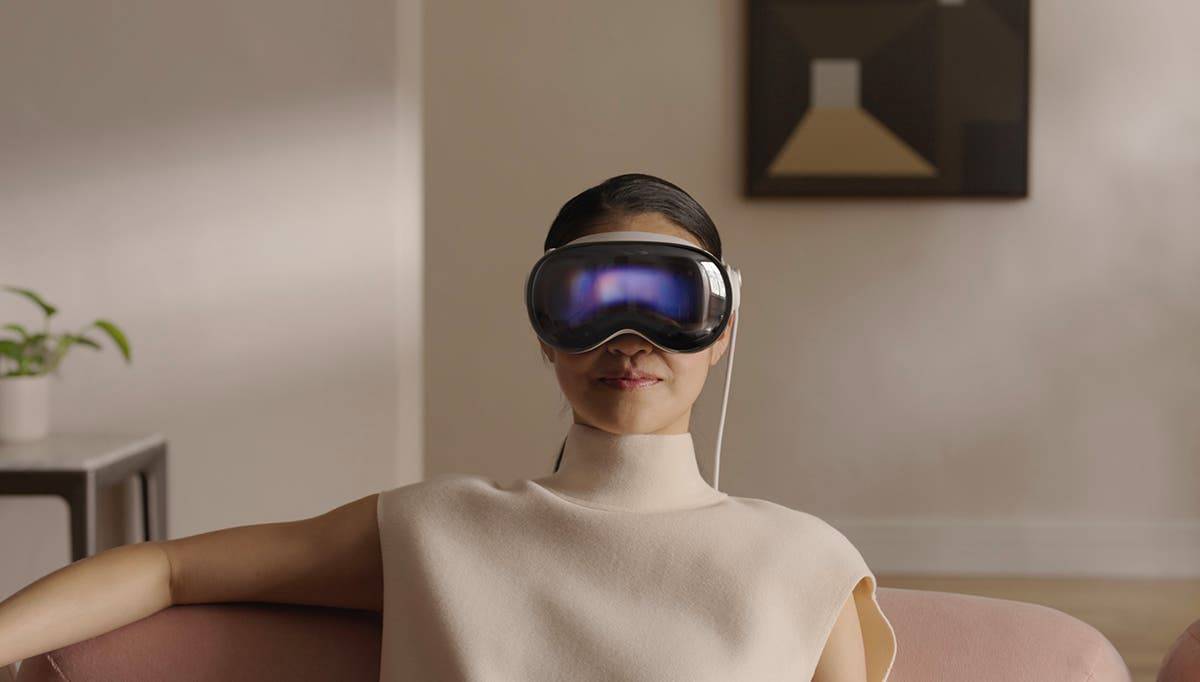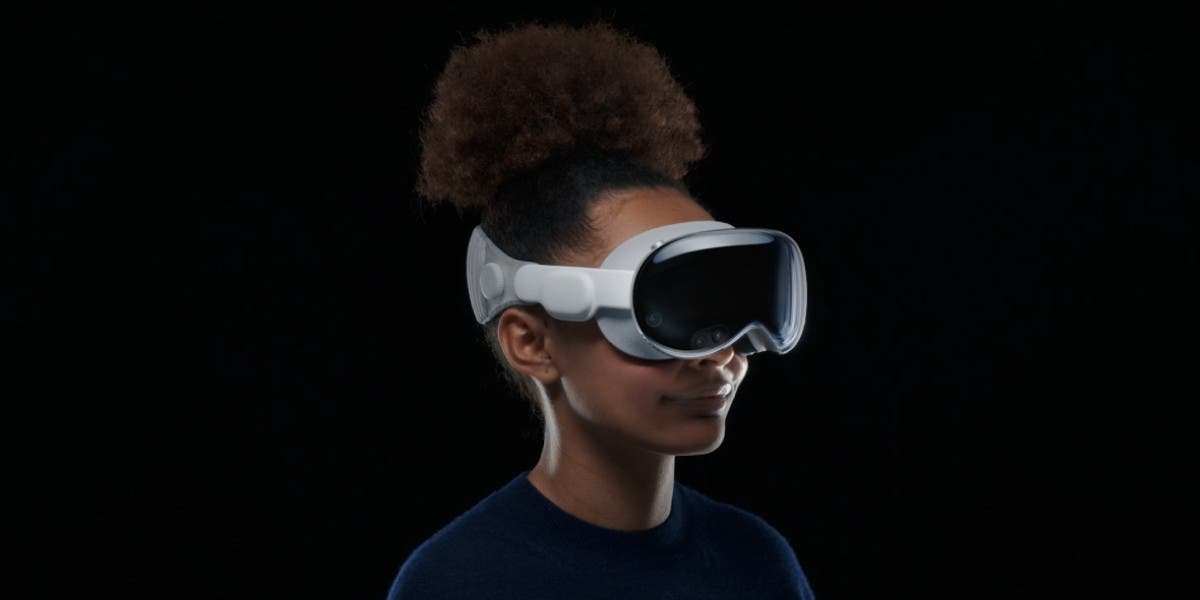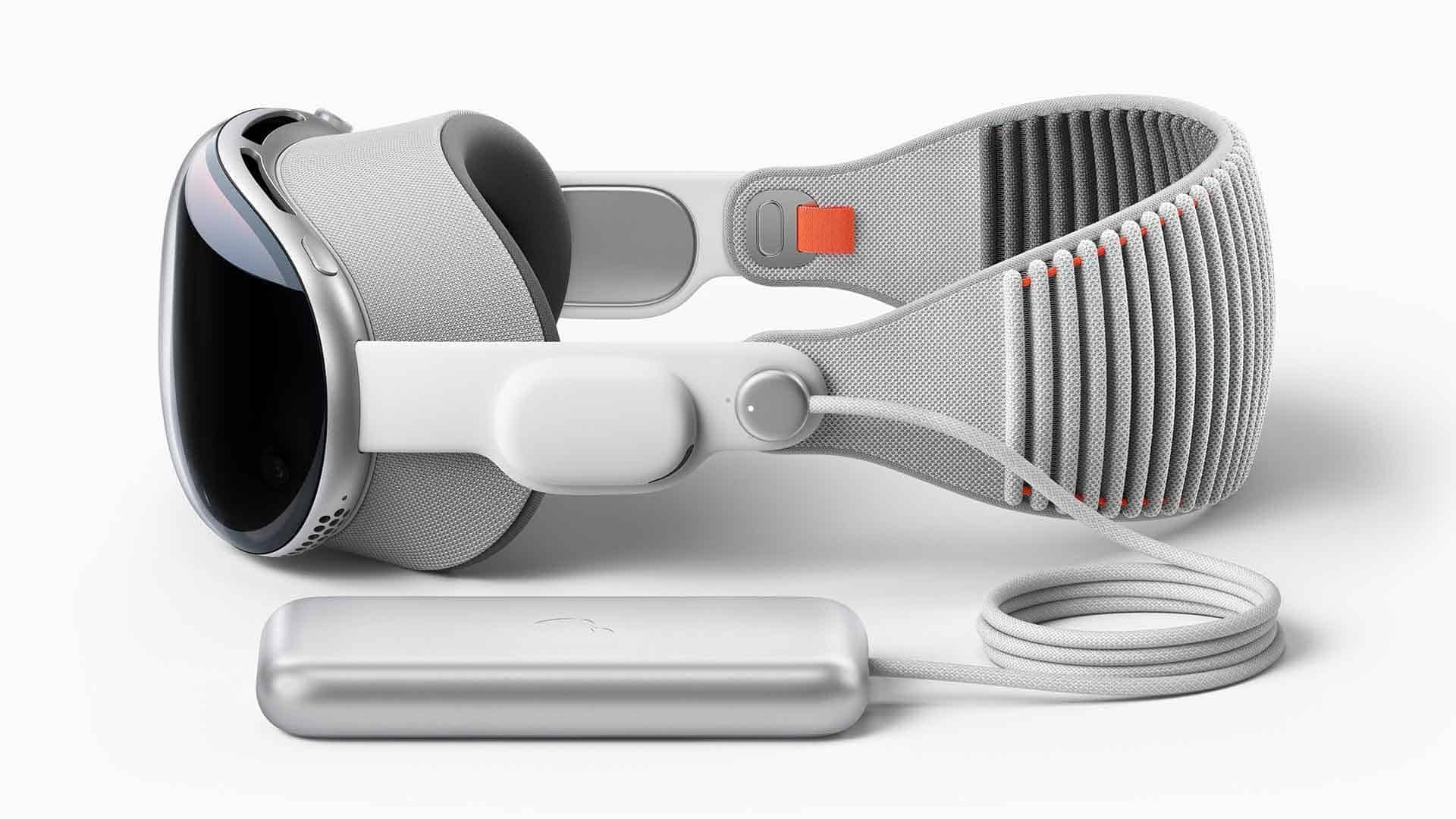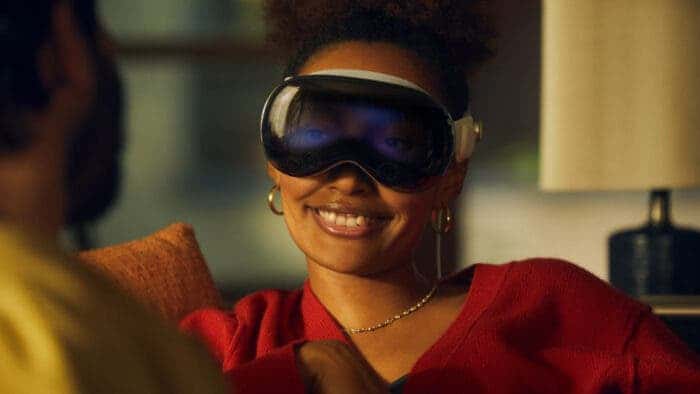Introducing the Apple Vision Pro, the highly anticipated mixed reality viewer unveiled at WWDC has sparked intense discussions and evoked a wide range of reactions. Some see it as a glimpse into a future where computers and apps transcend physical screens, creating a spatial computing experience that surrounds us. Others, however, can’t help but draw comparisons to dystopian visions depicted in shows like Black Mirror.
The uniqueness of Vision Pro lies not only in its design but also in its purpose. While other VR headsets focus solely on virtual reality experiences, Vision Pro aims to bring our existing software and habits into the realm of augmented reality. Rather than being an additional device, Apple envisions Vision Pro as a potential replacement for traditional computers and smartphones, following in the footsteps of how the iPhone replaced iPods and how many people now consider buying an iPad instead of a Mac.
It’s important to note that this transition won’t happen overnight. It’s not something we can expect in the near future, but perhaps in five or ten years. Nonetheless, Apple has made its direction clear, emphasizing the advent of a new era of spatial computing.
So, will this transformation truly occur, or will it end up being a fleeting futuristic concept? It’s difficult to say, but we can explore the reasons why everything could change or why it might turn out to be a colossal failure.
Apple Vision Pro: Exploring the Revolutionary Potential of Spatial Computing

Why It Could Succeed:
✅ The Allure of Spatial Computing The prospect of breaking free from the constraints of screens and using the real world as a canvas for work and entertainment is undeniably enticing. Imagine bidding farewell to editing videos on a tiny 14″ display while traveling, no longer straining to watch YouTube videos on a small iPhone screen, and experiencing movies or video games without the limitations imposed by TV screens. The potential for multitasking, with an expansive array of virtual windows surrounding us, is mind boggling. Consider the possibilities of augmented reality. Such as using an IKEA app to “try on” clothes or hairstyles in front of a mirror. Not to mention the immersion of video games blending seamlessly with the real world. With creatures emerging from walls in a hypothetical next generation Doom. The possibilities are endless and incredibly appealing.
✅ Apple’s Revolutionary Potential If there’s one company capable of revolutionizing entertainment, it’s Apple. Their exceptional engineers and visionary designers aside, Apple’s immense financial resources and unparalleled influence make it difficult for anyone to resist their initiatives. In 2022, Apple became the first company worldwide to surpass a $3 trillion market capitalization. Solidifying its position as a global technology leader.
During the Vision Pro presentation, the inclusion of Disney’s content demonstrated the tangible potential of the hardware. The scenes showcasing graphical overlays and contextual information while watching The Mandalorian, immersive NBA games, and even Mickey Mouse bounding around the living room represent real and achievable experiences enabled by Apple Vision Pro. Imagine the possibilities if other entertainment giants follow suit, with living room lights flickering in sync with the tension of Stranger Things, immersive 360° documentaries exploring the depths of the ocean like BBC’s Planet Earth, or attending major concerts as if you were on stage. Apple has the clout to bring all these experiences to life.
✅ The Magic of the Experience Let’s recall a personal anecdote to illustrate the impact of Apple’s technological advancements. In 2008, when touch screens were not yet widespread, the iPod Touch with its capacitive multitouch display felt like magic. The sense of wonder it evoked was undeniable. Similarly, early impressions of Vision Pro’s control and input system suggest an experience that feels almost telepathic, bordering on the magical.
Selecting elements within the Vision Pro interface merely by gazing at them, with gaze acting as a virtual mouse pointer. And performing gestures with fingers for various interactions—these features are awe-inspiring. Equipped with an array of cameras and the powerful R1 chip for real time processing, the gestures required for clicking and scrolling do not need to be exaggerated. They work even when the hand is at a distance from the viewer. The initial feedback implies that the interaction feels truly magical.

Why It Might Fail:
❌ The Disturbing Nature of the Experience To put it frankly, the idea of a future where our primary sense—vision—is filtered through a device that enhances but also alters our perception can be unsettling. It evokes a sense of unease akin to scenarios depicted in Black Mirror episodes. Moreover, wearing a headset for an extended period, even during social interactions, creates a sense of alienation and detachment from others. Apple is aware of this concern, as evidenced by the inclusion of an external display showing the wearer’s gaze.
However, it remains to see whether this will be sufficient to alleviate the feeling of disconnection. In the trailer, Apple attempts to normalize interactions between people wearing the Vision Pro. Showcasing a father playing and joking with his daughter while wearing the headset. This powerful scene implies that even authentic human connections can take place with a headset on. But will it truly be the case?
❌ Limited to Individual Use Vision Pro, like other headsets, is designed for use by one person at a time. While this may not be a significant issue for most devices, it becomes problematic when considering Vision Pro as an entertainment focused device. Those who live with others understand the joy of sitting on the sofa with a partner, roommate, or friend, sharing the experience of watching a great movie after a long day. However, this shared experience would be lost with individual viewers. While it may be possible for each person to have their own headset (albeit at a considerable cost), the naturalness of sharing such moments would be compromised. This issue extends beyond watching movies or series and affects multiplayer gaming experiences or even enjoying sports events together.
❌ The Risk of Fading Interest The current iteration of Vision Pro is an exclusive and somewhat cumbersome device. It comes with a hefty price tag, has a two hour battery life (even with an external battery). And is reportedly heavy due to its metal and glass construction. However, this is not a cause for significant concern, as advancements in technology have shown that research and development efforts can lead to more convenient and affordable solutions over time. The same can be true for the Apple viewer.
Batteries will become smaller yet more powerful, production costs of chips and sensors will decrease, and eventually, Vision Pro could become accessible to a wider audience with fewer usage limitations. The real question is whether Apple can democratize the headset within a reasonable timeframe. If they fail to do so, the costs of producing AR/VR content for Vision Pro may become unsustainable for not only Disney but also other partners.
Apple Vision Pro: The Future of Computing?

Apple Vision Pro is a new mixed reality headset that was announced at WWDC 2023. The device has been met with mixed reactions. With some people praising its potential and others expressing concerns about its impact on society.
The Promise of Vision Pro
Vision Pro is a powerful device that has the potential to revolutionize the way we interact with computers. The headset features a high resolution display, eye tracking, and hand tracking. This allows users to interact with virtual objects in a natural way. Vision Pro can also be in use to create immersive experiences, such as virtual tours, games, and simulations.
The Concerns About Vision Pro
Some people have expressed concerns about the potential impact of Vision Pro on society. For example, some worry that the headset could be used to create addictive or isolating experiences. Others worry that the headset could be used to collect personal data or to track users’ movements.
The Future of Vision Pro
It is still too early to say what the future holds for Vision Pro. However, the device has the potential to be a major disruptor in the computing industry. If Vision Pro is successful, it could change the way we work, learn, and play.
Here is a more detailed look at the pros and cons of Vision Pro:
Pros:
- Immersive experiences: Vision Pro can be in use to create immersive experiences that allow users to feel like they are actually present in a virtual world. This could be in use for a variety of purposes, such as gaming, education, and training.
- Increased productivity: Vision Pro could help people to be more productive by allowing them to work in a more immersive and distraction free environment.
- Improved communication: Vision Pro could help people to communicate more effectively by allowing them to share virtual experiences with others.
Cons:
- Addiction: Some people worry that Vision Pro could be addictive, as it could provide users with a constant stream of stimulation.
- Isolation: Vision Pro could lead to social isolation, as users may spend more time interacting with virtual worlds than with the real world.
- Privacy concerns: Some people worry that Vision Pro could be in use to collect personal data or to track users’ movements.
Overall, Vision Pro is a powerful device with the potential to revolutionize the way we interact with computers. However, there are also some potential concerns about the device, such as addiction, isolation, and privacy. It remains to see whether Vision Pro will be successful in the long term.





